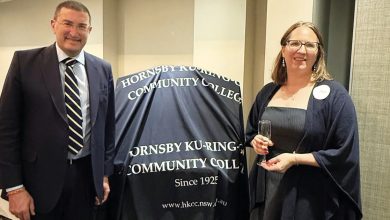
My mother at the time worked in the Avonmouth factory of Peek Freans Biscuits near Bristol in England. Later, after my family had moved to New South Wales, my mother gained employment at Arnott’s biscuits at Homebush.
When I arrived in Australia there were a number of biscuit companies operating in various states including Swallow & Ariell, T. B. Guest, Menz, Ve-Toy, Brockhoff and quite a few others.
Now both companies have some similarity in their histories and although their names have survived as renowned brand names only Arnotts survived as a company in its own right.
Peek Frean started life as a tea importation company in 1821 in England called Peek Brothers & Co founded by James Peek and his brothers. James Peek and his wife had eight children and two of their sons announced that they did not wish to join the tea business. So James suggested that they start a related business of producing biscuits.
The sons eventually decided that they did not wish to continue with the biscuit business leaving James Peek to seek someone to manage the biscuit side of the business. One of his nieces had married a miller and ship’s biscuit maker, George Hender Frean, so James invited George to manage the biscuit business of Peek Brothers & Co.
In 1857 Peek, Frean & Co. Ltd was registered. It started to export biscuits to Australia in 1861. In 1931 the company established a factory at Camperdown, Sydney. 1921 saw Peak Frean & Co Ltd enter into amalgamation with Huntley & Palmer, another British biscuit manufacturer, which led to the formation of a holding company known as Associated Biscuit Manufacturers Ltd.
Jacob’s biscuits also joined the group in 1961. The company ceased to exist after being sold to Nabisco in 1981. Various brands and factories were eventually sold off in different markets, Arnott’s gaining the Australian operations and brands such as “Vita Weat”.

In 1865 he started the William Arnott Steam Biscuit Factory in Newcastle NSW. The factory later moved to Forest Lodge and then later still to Homebush. As stated, Arnott’s grew by acquisition and merger.
In 1949 the company merged with Brisbane biscuit manufacturer Morrow Pty Ltd but its biggest growth took place in the mid 1960s when it formed a holding company named The Australian Biscuit Company Ltd and acquired the following companies, Brockhoff’s, T. B. Guest, Swallow and Ariell, Menz, Mills & Ware, and also Motteram giving the company manufacturing and distribution facilities nationwide. Later it also acquired brands such as “Wagon Wheels” from George Weston Foods.
Many of the now Arnott’s brands have come from such acquisitions including “Marie”, “Tiny Teddy” and “Salada” You may also be interested to know that the “SAO” biscuit name came about as Arnott’s were asked to manufacture a cracker biscuit for the Salvation Army Organisation.
Arnott’s Tim Tam biscuits have become the biggest selling biscuit product of all time in Australia. It has been claimed that it came about after a visit to the UK by a Arnotts executive saw and tried the “Penquin” brand biscuit manufactured by McVitties and decided to create something similar in Australia.
The Parrot logo came about after William was gifted a colourful macaw parrot by a ship’s captain in the 1870s when he was returning from a visit to his native Scotland – the fated fowl became the face of Arnott’s biscuits for more than 150 years – and counting.










